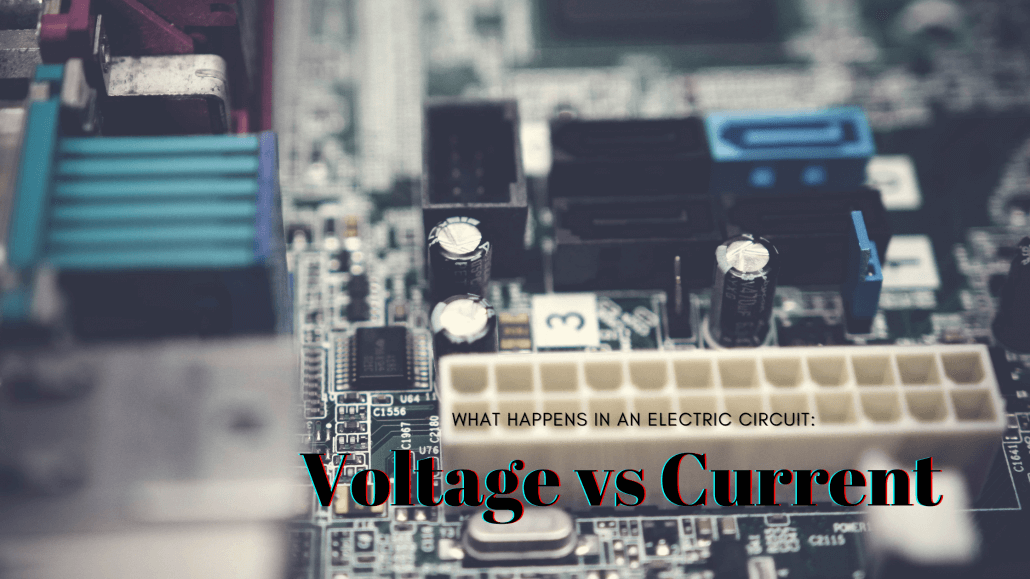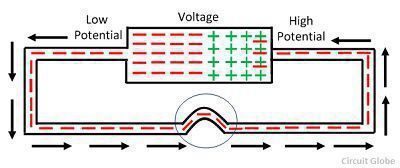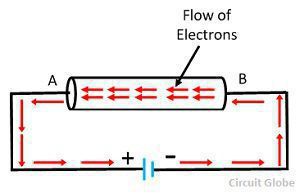What happens in an electric circuit: Voltage vs Current
In order to fully comprehend and explore the complicated world of electronics, it is crucial to start from the basics. In this blog, we will be tackling the fundamentals of electricity itself: Voltage and Current. But before jumping right into it, we will have to understand what exactly is electricity?

Electricity is defined as the form of energy resulting from the existence of charged particles (electrons or protons), either statically as an accumulation of charge or dynamically as a current.
To put simply, electricity is the movement of positive and negatively charged particles. It may be hard to visualize what exactly electricity is since we can not “see” it, but we are able to measure it.
What will be covered:
- What is Electricity
- Definition of Voltage and Current
- The key difference between Voltage and Current
- Comparison between Voltage and Current
- Applications of Voltage and Current
What is Electricity?
Electricity is the movement of positive and negatively charged particles. There are 3 major aspects to know about electricity, but we will be focusing on 2 of them in this blog:
- Voltage refers to the difference in charge between the two points.
- Current refers to the flow of electrical charges.
- Resistance refers to the measure of opposition to the flow of current.
It can only occur in a closed circuit in order for the charges to flow, while an open circuit would stop the flow throughout the entire circuit.

Ref: All about circuits
Since we are talking about electricity, we will need to briefly mention Georg Ohm, a German physician who discovered Ohm’s Law. He states “the current flow through a conductor is directly proportional to the potential difference (voltage) and inversely proportional to the resistance”. This brings us to our main focus this guide, Voltage and Current.
Definition of Voltage and Current
Voltage refers to the type (strong/weak) of electromagnetic force. When there is a strong magnitude of voltage, the current flowing through the circuit would be strong. Therefore, when the magnitude of the voltage is weak, the current flowing through the circuit would be weak. It is also represented by the symbol “V”, and its SI unit is known as “volts”.

Ref: Circuit globe
As shown in the illustration, the battery is storing all the energy and allowing the electrons to flow through the circuit. However, the placement of wire is not even throughout the circuit, which caused some of the voltage to be lost as heat energy. Thus, the voltage at the start would be lesser than the one at the receiving end, this is known as “voltage drop”.

Ref: Circuit globe
Current refers to the effect of the voltage. It measures the amount of charge flowing through the circuit over a period of time. It is also represented by the symbol “I”, and its SI unit is known as “ampere”.
Electric current is divided into 2 types: alternating current (AC) and direct current (DC). To explain it in simple terms, the electrons only flow in one direction for direct current. The direction of electrons is reversed in alternating current. For a more in-depth explanation of AC and DC, do check out these blogs:
Alternating Current (AC) vs Direct Current (DC), the guide for you
Basic Electronics: Alternating Current (AC) vs Direct Current (DC)
The key difference between Voltage and Current
If you still find the concept of Voltage and Current confusing, these are some key differences between Voltage and Current:
Voltage:
- The flow of electrical charges between the two-point of an electrical field.
- The ratio of work done is to charge.
- The difference between the point in an electric field
- It is measured by a voltmeter.
- The cause of the current.
Current:
- The flow of electron in the electrical field.
- The ratio of charge to time.
- The flow of charges between two points.
- It is measured by the ammeter.
- The effect of the voltage.
Comparison between Voltage and Current
| Basis for Comparison | Voltage | Current |
|---|---|---|
| Definition | Difference between two points of an electric field | The flow of charges between two points |
| Unit | Volt | Ampere |
| Symbol | V | I |
| Formula | voltage = work done/charge | current = charge / time |
| Field Created | Magnetic Field | Electrostatic Field |
| Types | Alternating voltage & Direct voltage | Alternating current & Direct current |
| Polarity | Alternating voltage changes, but direct voltage cannot change its polarity | Alternating current changes its polarity but the polarity of the direct current remain constant |
| Produces | Alternator | Voltage |
| Measuring Instrument | Voltmeter | Ammeter |
| Charges | 1 Volt = 1 Joule/ Coulomb | 1 Ampere = 1 coulomb / second |
| Series Connection | Unequal in all the components | Equally distributed in all the components |
| Parallel Connection | Magnitude of the voltage remains constant in all the component | Magnitude of current vary in all the component |
| Loss | Due to impedance | Due to passive elements |
| Relation | It is the cause of the current | It is the cause of the voltage |
Applications of Voltage and Current
Once we understand all the theory behind Voltage and Current, we can now look at some real-world uses of it:
Voltage:
- Battery
- Generator
Current :
- Dishwasher (AC) – AC is found in household appliances to power up electric motors which convert electric energy to mechanical energy.
- Flashlight (DC) – DC is found in appliances that contain a battery.
Recommendations for analyzing Voltage and Current
DT71 Mini Digital Smart Tweezers – LCR/ ESR Meter, Multimeter, SMD Tester with Built-in Micro Signal Generator – If you are looking for a multi-function item that not only acts as a multimeter, but also identifies SMDs and has a built-in signal generator that outputs waveform signals, then this DT71 Mini Digital Tweezers is the perfect tool for you! Additionally, it has a unique trinary structure, which can be separated into a controller, testing arm, and tweezer tip. They are all flexible to be replaced and combined. Moreover, the gold-plated interchangeable tweezer tips would ensure higher measurement accuracy as well.
Digital Capacitance Meter – If you are a beginner just looking to get a basic multimeter, then this would satisfy you! This multimeter is lightweight and compact which makes it potable. Moreover, it is of high measurement accuracy and features a backlight display. This is a truly reliable, durable and beginner-friendly multimeter!

MDP-XP Smart Digital Power Supply Kit – If you are considering to learn more about DC, look no further than this programmable linear DC power supply. This mini digital power system is capable of connecting different modules for use. Furthermore, it has a 2.4G wireless connection that allows you to achieve multichannel free combination at the power of 90W per channel. It is able to meet diversified testing needs as well.
Summary
And with that, we have come to the end of this blog. Now that you know everything about Voltage and Current, and the tools you can get to experiment with it, you can now dive right into the world of electronics and create exciting projects! Also, if you are interested to learn more about voltage and current, feel free to check out some projects and other blogs down below!
Resources
Automatic LED Emergency Light Circuit – This project is designed to turn on when the power supply is cut-off. Moreover, there are a total of 3 circuits, ranging from simple to advanced. Check out this project if you’re interested to try out for yourself!
Bluetooth-Controlled AC Light Dimmer With Android Mobile App – This project is designed to control an AC lamp and adjust its brightness and light intensity through a phone.
Useful Reads
Work from Home: What Do You Need for An Electrical Engineer’s Home Lab
Simple electronics projects and circuits

